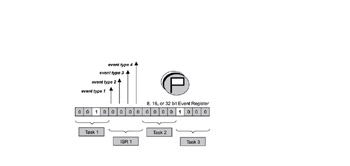
Master the fundamental concepts of real-time embedded system programming and jumpstart your embedded projects with effective design and implementation practices. This book bridges the gap between higher abstract modeling concepts and the lower-level programming aspects of embedded systems development. You gain a solid understanding of real-time embedded systems with detailed practical examples and industry wisdom on key concepts, design processes, and the available tools and methods.
Delve into the details of real-time programming so you can develop a working knowledge of the common design patterns and program structures of real-time operating systems (RTOS). The objects and services that are a part of most RTOS kernels are described and real-time system design is explored in detail. You learn how to decompose an application into units and how to combine these units with other objects and services to create standard building blocks. A rich set of ready-to-use, embedded design “building blocks” is also supplied to accelerate your development efforts and increase your productivity.
Experienced developers new to embedded systems and engineering or computer science students will both appreciate the careful balance between theory, illustrations, and practical discussions. Hard-won insights and experiences shed new light on application development, common design problems, and solutions in the embedded space. Technical managers active in software design reviews of real-time embedded systems will find this a valuable reference to the design and implementation phases.
Qing Li is a senior architect at Wind River Systems, Inc., and the lead architect of the company’s embedded IPv6 products. Qing holds four patents pending in the embedded kernel and networking protocol design areas. His 12+ years in engineering include expertise as a principal engineer designing and developing protocol stacks and embedded applications for the telecommunications and networks arena. Qing was one of a four-member Silicon Valley startup that designed and developed proprietary algorithms and applications for embedded biometric devices in the security industry.
Caroline Yao has more than 15 years of high tech experience ranging from development, project and product management, product marketing, business development, and strategic alliances. She is co-inventor of a pending patent and recently served as the director of partner solutions for Wind River Systems, Inc.
About the Authors
8.3.3 Typical Uses of Event Registers
8.3.3 Typical Uses of Event Registers
Event registers are typically used for unidirectional activity synchronization. It is unidirectional because the issuer of the receive operation determines when activity synchronization should take place. Pending events in the event register do not change the execution state of the receiving task.
In following the diagram, at the time task 1 sends the event X to task 2, no effect occurs to the execution state of task 2 if task 2 has not yet attempted to receive the event.
No data is associated with an event when events are sent through the event register. Other mechanisms must be used when data needs to be conveyed along with an event. This lack of associated data can sometimes create difficulties because of the noncumulative nature of events in the event register. Therefore, the event register by itself is an inefficient mechanism if used beyond simple activity synchronization.
Another difficulty in using an event register is that it does not have a built-in mechanism for identifying the source of an event if multiple sources are possible. One way to overcome this problem is for a task to divide the event bits in the event register into subsets.
The task can then associate each subset with a known source. In this way, the task can identify the source of an event if each relative bit position of each subset is assigned to the same event type.
In Figure 8.9, an event register is divided into 4-bit groups. Each group is assigned to a source, regardless of whether it is a task or an ISR. Each bit of the group is assigned to an event type.
Figure 8.9: Identifying an event source.






